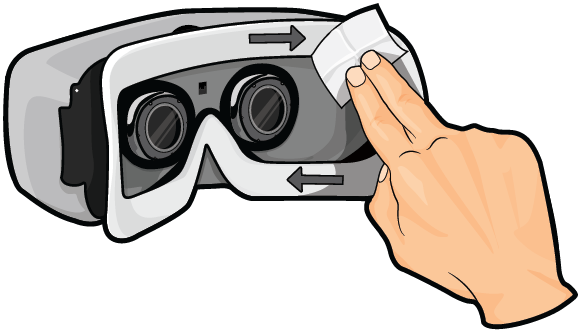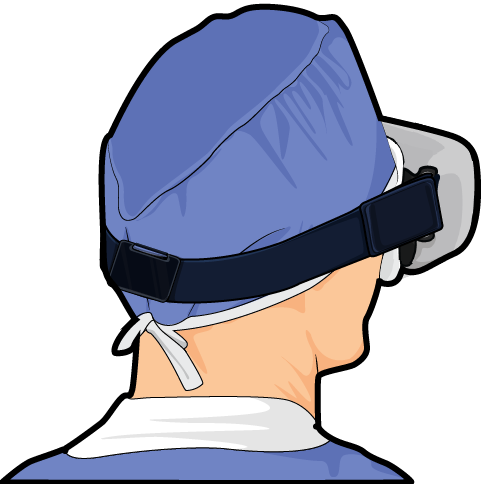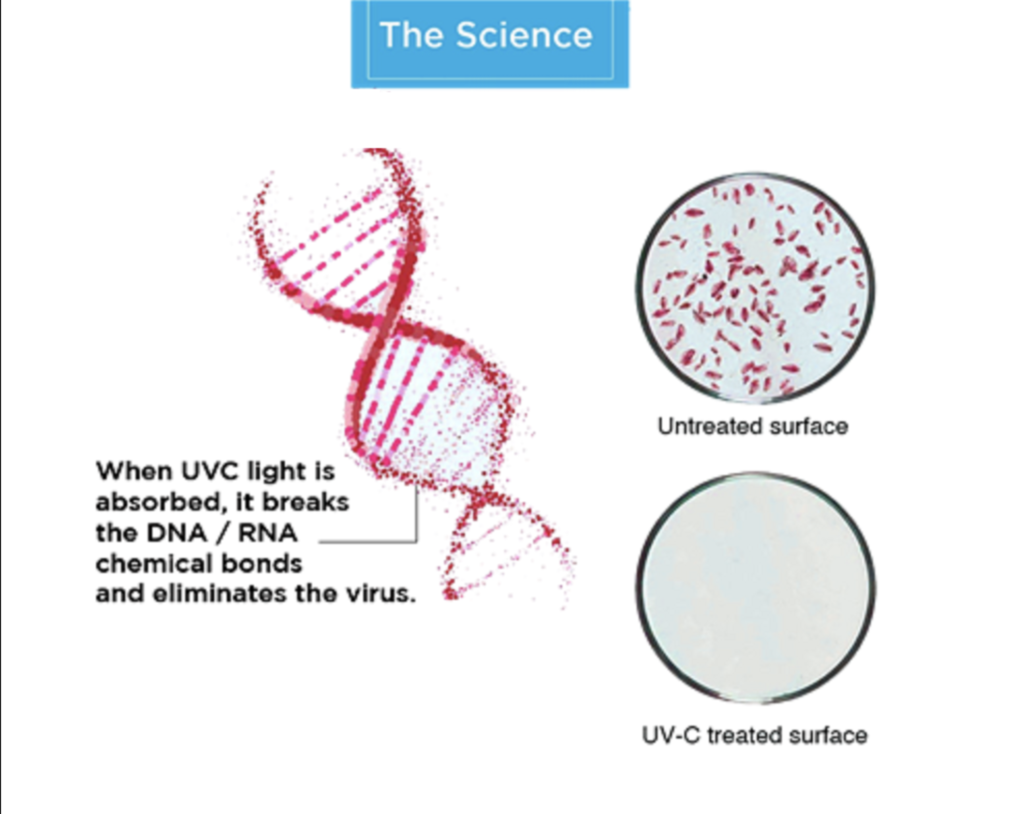Blog: EYE-SYNC Sanitation During SARS CoV-2
In response to the spread of SARS-CoV-2 and the ongoing health crisis, we thought it would be a good time to review SyncThink’s extant bio risk mitigation and biosafety strategies, as well as new recommendations in light of recent developments.
As a medical device platform, biocompatibility and biosafety are of utmost significance to SyncThink. To deliver the highest quality product possible and to ensure the safety of our clients and users, SyncThink verifies safety requirements over all domains, including: hardware, software, electrical and EM radiation, and biosafety. Herein, we will focus on the last point and will take a look at SyncThink’s current strategies.
Current risk mitigations strategies:
Biological safety and risk management are primarily focused on the ways in which the device may act as a reservoir for contagions and the associated possibility of passing them between different users during use. The two primary risks are the sharing of the face contact surface (all eye tracking assessments) and shared contact with hair or the top of the scalp (VOR and VORx assessments).
There are several challenges that head mounted displays pose to the face. Off the shelf GearVR devices are equipped with a cloth surface that contacts the user’s face. While this surface is meant to provide a comfortable environment for use and respite from the hard plastic of the device, it is also a haven for any contagions. The cloth has lots of nooks and crannies that would be hard, if not impossible, to thoroughly clean.
SyncThink has removed this cloth surface and replaced it with a favorable biocompatible counterpart. Rather than utilize cloth, the face shield is made of a specially formulated foam that is utilized in medical device applications. While the foam itself is already certified and used in other medical products, SyncThink had the EYE-SYNC system certified against ISO 10993, the international standard for biological evaluation in a medical device context. By meeting this ISO standard, EYE-SYNC has been validated to be biologically safe in a variety of domains, including safety from biological growth (something the default cloth face shield would not pass), minimized skin irritation (assuming unbreached skin), and chemical compatibility.
Most importantly, medical-grade foam is easily sanitized with common disinfectants such as the pre-saturated isopropyl wipes provided as a sample in each EYE-SYNC device.

Looking to mitigate the risk of cross contamination from the head and scalp, there are a few factors worth considering. The main risk here is the contamination of the head strap. Because the head strap is a cloth and elastic construct, there isn’t much hope of replacing it with a more biologically safe alternative. However, rather than replace the strap, we are able to mitigate risk by utilizing surgical caps to create a barrier between the strap and the user. Utilizing this cheap and readily available barrier, we can ensure the headstrap never comes into contact with the hair or scalp. If it was contaminated by a past patient and not cleaned properly, it at least won’t come into contact with the subsequent patient who is wearing the cap.


Additional Recommendations:
Now that we’ve covered the legacy risk mitigation strategies employed by SyncThink, let’s take a moment to assess elevated risk in a SARS-CoV-2 environment.
Our number one recommendation is to maintain proper disinfection protocols both before and after any subject uses the EYE-SYNC system. While it may be nice to trust that the last administrator cleaned the device upon assessment completion, it is best not to take any risks and conduct a thorough cleaning of the foam gasket prior to any assessment. In addition to the foam gasket, it is important to disinfect any hard surfaces on the head mounted display that administrators or patients either deliberately or accidentally come in contact with.
While this standard disinfection methodology is certainly adequate, there are further precautions that some clients may want to take to either expedite their workflow or as a supplement to their typical disinfection workflow. Another option for eradicating viruses, bacteria, and other pathogens is Ultraviolet (UV) light exposure. Radiation of wavelengths ranging from 250-280nm has been proven to break down the DNA and RNA of viruses and bacteria, effectively obliterating them. There is little risk for an enclave of bacteria or virus to survive and create an offshoot branch with a resistance to a particular cleaning agent. Many sanitation devices already utilize UV, such as CleanBox Technologies (https://www.cleanboxtech.com/). More players are entering the field everyday. CleanBox is particularly well suited for use with EYE-SYNC as it is a VR specific solution, but other companies have implementations with other form factors such as UV emitting wands. It is worth noting that given the scale of the crisis at hand that many people and institutions are trying to implement this technology, so backorders and waiting times will be elevated.

Importantly, CleanBox notes that “UVC lights are highly effective against H1N1, a single strand RNA virus. Studies have confirmed that UVC light can be effective for combating SARS-COV. Additional studies are needed to determine and confirm the specific dose response required to inactivate COVID-19 on different surfaces and materials – and Cleanbox is testing those dosages now.”
Finally, we recommend the adoption of physical distancing protocols and procedures during testing. This means having minimal personnel in the room while testing occurs. Fortunately, due to the untethered nature of EYE-SYNC, it should be easy to maintain a good degree of physical distance during the administration of any eye tracking tasks on the device. Further, we recommend that clinicians and administrators do not touch the face of any patients during device setup or test administration. Additionally, any patients with an elevated temperature, exhibiting flu like symptoms, or exhibiting clear respiratory complications should not be assessed using EYE-SYNC.
Stay safe, stay healthy, and help crush the curve by utilizing these best practices for EYE-SYNC sanitation!